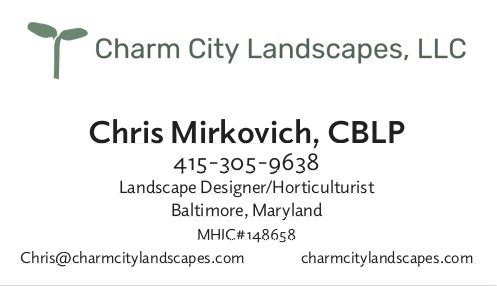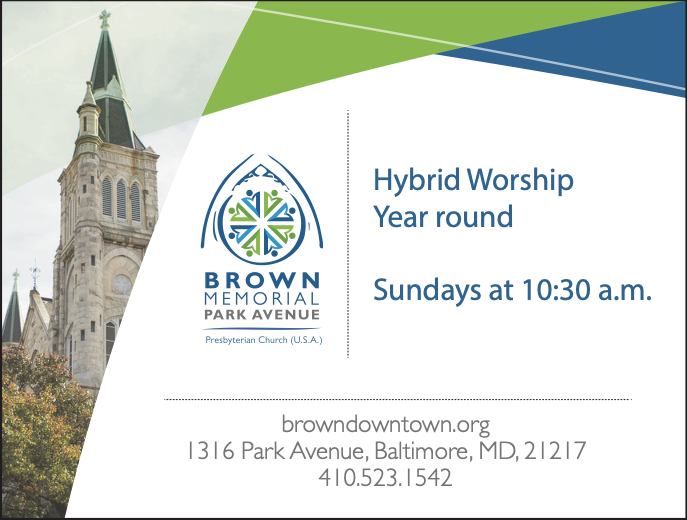There are several ways to become involved with greening efforts around Bolton Hill. The Bolton Hill Garden Club sponsors educational events and greening grants for beautification. The BHCA greening committee coordinates park and tree maintenance in public green spaces. Contact parks@boltonhillmd.org to learn more.
Bolton Hill Garden Club
Ever wondered what type of flower would grow in a shady backyard, how to divide overgrown perennials, or how to best attract pollinators to your garden? Then join the Bolton Hill Garden Club! A resource for local gardeners since 1965, the garden club schedules educational programs and hands-on workshops throughout the year. Garden club members range from master gardeners to total novices, from those with large gardens to those cultivating a container or two on a fire escape. It also sponsors social events, which are a great way to meet others who share an interest in gardening.
In addition to promoting gardening education, the garden club funds greening activities in the neighborhood through its Greening Grants Program to help create and improve public green spaces. The garden club funds greenscaping and hardscaping projects in neighborhood parks and tree wells, with a focus on the use of native plants. Each year, applications are accepted in the winter, with grants awarded in the spring.
To learn more about the Bolton Hill Garden Club, please visit our website. Membership is $36 annually per household, and you can become a member online.
Tree Maintenance
Trees contribute heartily to the beauty of Bolton Hill. Since city life is hard on trees, they need continued maintenance, from planting to watering to pruning.
Bolton Hill works with the Midtown Community Benefits District to plant and maintain trees in the neighborhood. Volunteers who live in the neighborhood work with Midtown to track which street trees in Bolton Hill are dead or dying and need removal, which tree wells have large stumps ready for removal, and which tree wells are ready for planting. To check if a particular street tree location is on the list for tree removal, stump grinding, or replanting, see the online spreadsheet here.
Baltimore City Forestry is equipped to remove large dead trees and stumps on public property. If a street tree location is not already reported in the online spreadsheet, report it through the City’s 311 service request system using the following process:
- If a large tree or branch has fallen down on public property, select “City Street Tree Down” or “City Street Tree Fallen Limb,” and it will receive expedited attention. If it’s a dead sapling or smaller branch that’s down, submit a service request to Midtown.
- For non-urgent requests to remove a large dead or dying tree or stump, select “City Street Tree Inspection.” The 311 app uses a user’s location, so make sure to report at a tree or stump’s location if using the 311 app. The City must inspect a reported tree before it’s added to its removal queue, so expect that tree and stump removal can take a lengthly amount of time. The same 311 service request number follows a tree from inspection all the way to stump removal.
- Email the 311 service request number with the tree or stump’s location to trees@boltonhillmd.org so that the Bolton Hill online spreadsheet can be updated.
Planting Trees
Volunteer tree plantings are organized with Midtown on a Saturday in the spring and in the fall. Anyone is welcome to volunteer to plant trees. No experience required. Midtown will bring the equipment; just bring your own gloves. Approximately 20 trees are planted each planting session. To be notified when the next tree planting is scheduled, email trees@boltonhillmd.org or look for an upcoming tree planting date on the BHCA calendar.
Midtown obtains trees native to Maryland from Baltimore City Forestry and, in consultation with neighborhood volunteers, selects ones suited for their intended planting locations in public green spaces. When a tree is planted, Midtown reports its location and species to Baltimore City Forestry. See the City’s list of preferred tree species for more information.
Watering Trees
The trees in front of your home will thrive if you help to take care of them. New trees should receive 20 gallons of water once or twice a week (equivalent to a slow faucet flow for 10 minutes) from May through October for at least their first two years in the ground. Established trees have a root system that can draw more water to the tree without regular watering, but certainly benefit from watering as well, especially in dry periods.
After planting a new tree in a public space, Midtown crews regularly water it for two years. Sometimes Midtown places a gator bag at a new tree’s base. Gator bags hold a few gallons of water that slowly trickle out to water the tree. If you see a young tree that looks distressed, feel free to directly water or fill up its gator bag yourself. Midtown removes gator bags in the winter.
Pruning Trees
Why prune trees? Pruning helps ensure that city trees have the best shot at living longer and providing all the benefits of large trees to a city street. Tree branches that grow into the street are at risk of being mangled by parking trucks and can reduce the line of sight and obscure street lights at night for pedestrians.
Volunteer tree pruning sessions in Bolton Hill are organized with Midtown in the winter. As with tree planting, no experience required. To be notified when the next tree pruning is scheduled, email trees@boltonhillmd.org or look for an upcoming tree planting date on the BHCA calendar.
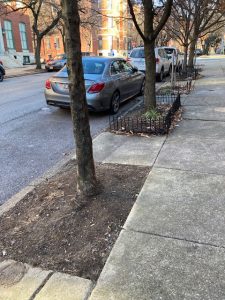 Tree Wells
Tree Wells
Tree wells are city property, but anyone can plant and maintain them. The recommended square area is 4 feet by 8 feet to give trees sufficient space to grow without heaving the sidewalk, though many Bolton Hill tree wells are smaller, often because they would otherwise cross gas or water lines. Avoid putting mulch directly on a tree’s trunk, which heightens the risk that a tree could be harmed by pests or disease.
Raised wood, brick, or stone planter boxes around a tree well are not good practice. They inhibit rain water from running from the sidewalk into the tree well as a preferred alternative to sewer drains. The raised soil can build up around the base of a tree and negatively affect a tree’s growth. In addition, planter boxes may deteriorate and need to be removed when a new tree is planted or tree well is enlarged.
Temporary decorative fencing still allows rain water to flow into tree wells while adding an aesthetic touch and inhibiting dogs from over-fertilizing the well. Permanent decorative fencing can be a barrier to enlarging a tree well or removing a dead tree or stump.
Over several years, Midtown and BHCA are funding the creation of new tree wells and enlargement of existing tree wells throughout the neighborhood.
More about Trees in Baltimore
You can find out more about trees through Tree Baltimore and Baltimore Tree Trust and become certified to plant, maintain, and prune trees through Baltimore’s Treekeepers program.
Go to Baltimore’s Tree Inventory Map to identify tree species planted on public land around the city and look up any neighborhood’s tree equity score.

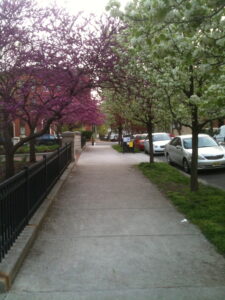

.png)

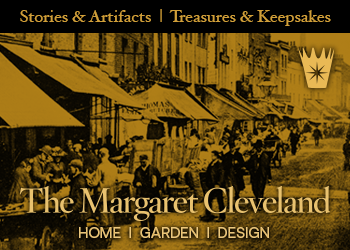
.png)


